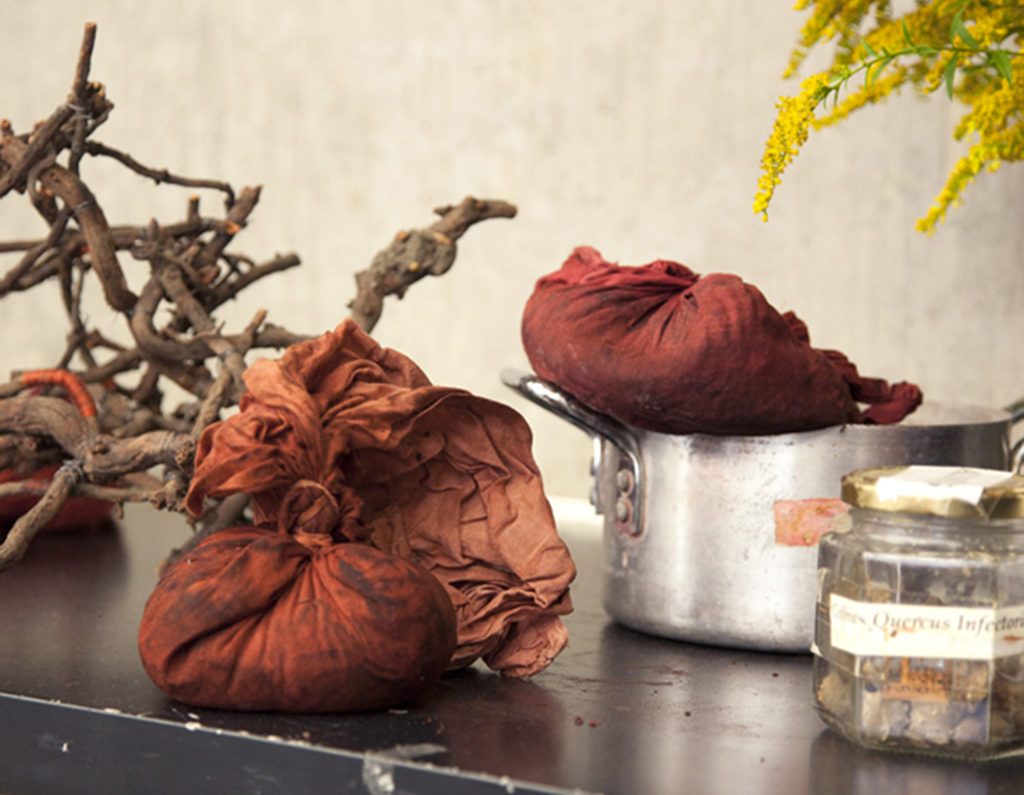Much is made of the future of this country as being a knowledge-based economy, but actually, the real prospects are to be found not just in developing technology (often swept away by overseas interests) but in creativity.
There’s empirical evidence. British designers are in demand worldwide, and UK creative companies are involved in prestigious, innovative work across the globe.
In a major report commissioned by WardWilliams Creative, we consider their approach to business, their specific qualities, their prospects, and give a view on how the UK can encourage creativity.
Leading up to publication of the report, we will be sharing the latest thought-provoking interviews with the businesses we are researching until the final report will be avaialble to download. These reports and interviews have been compiled by Larry Dillner of Decision Magazine.
Sustainability and Luxury are not Incompatible
The array of brightly-coloured fabrics in Karen Spurgin’s workshop prove the point that she is passionate about conveying: that sustainability and luxury are not incompatible.
It is a common misconception, says the co-founder of design consultancy ao Textiles, that natural dyes are by definition dull colours. “Even I once thought natural dye meant grey and beige,” she admits. “But plant dyes can be used to create high-quality textiles in a wide range of vibrant, bright colours. And naturally sourced materials and sustainable production techniques like upcycling and local sourcing can contribute to superb results.”
Another misconception, she says, is that natural dyes are only available on coarser, hand-loomed fabric, “which can be beautiful but just not our focus.” ao are challenging that idea by collaborating with a weaving business to produce British-made, naturally dyed silk. “In theory we could now supply this to couture designers, which would be a world first,” says Spurgin. “At the moment it would be expensive and only available in small runs, but now we know how to do it there is the potential for mass production as we continue to hone the idea.”
Another plan is to create their own dyes, working with a British artisan farmer on a ‘field-to-fabric’ process. “People say if he grows a dye plant for colour instead of wheat for instance there will be less food crops, but as part of his crop rotation, it makes sense” says Spurgin.
They are working with another British company to create a stable, natural dye product from plants such as woad. The weaving house will then take the powder and do the dyeing process. The idea is to have every part of the process based in the UK to make the business viable after Brexit, which Spurgin says is likely to affect the UK’s creative industries, not least through the loss of funding opportunities.
She started the business as a consultancy in 2005 with Penny Walsh and Emma D’Arcey. Collectively, they were able to offer the unusual mix of embroidery, natural dyeing, hand-marbling,and print design.
“People say if he grows a dye plant for colour instead of wheat for instance there will be less food crops, but as part of his crop rotation, it makes sense” says Spurgin.
They came together to create textiles for a sustainable haute couture collection for American hair and beauty company Aveda with designer Deborah Milner. “Initially, we thought that we would like to work with organic duchesse satin,” Spurgin recalls. “Then we quickly realised that this was an impossibility – at that time organic duchesse satin was not available. So it became a research project to find out what we could do. And I realised there was a really big gap in the market for a sustainable fabric that was of a quality that couture fashion designers would want to use.
“Big companies talk about sustainability but what they are doing is tinkering with existing practices and I think we need to start from scratch with new practices,” observes Spurgin, whose company has been recognised by the Ethical Fashion Forum and had its dyeing processes approved by Greenpeace.
“As you get older, you build reservoirs of knowledge. All the time you are looking at things and feeding yourself with what they look like and how they feel. You almost build up a library in your head. And I like looking for solutions, working out how to do things.”
That means that sustainable choices are at the heart of ao’s production methods; for example, they have revived dyeing techniques that became more or less redundant in mainstream textile production following the invention of synthetic dyes in the 1830s.
“Fashion is one of the most polluting industries, second only to petroleum,” observes Spurgin. “When we started, there really wasn’t much interest in changing that and our entire industry is still geared up for synthetic dyes. You can buy an organic, Fair Trade cotton dress but it will still be dyed with synthetic dyes. Our main driver has been to develop a way to take natural dye technology into the twenty-first century. Our interest is in creating a closed loop, whereby you can avoid putting old clothes into landfill; at the moment. when that happens, the chemicals in them go into the ground.”
Spurgin believes sustainability is a lot sexier than people give it credit for. “Innovative textiles and environmentally responsible design are not mutually exclusive,” she states.
A dream client for ao would be a fashion designer like Stella McCartney. “But more than working with her, my ambition would be to make a trainer for, say, Adidas using natural dye,” adds Spurgin. “They have some really cool trainers. Everyone thinks natural dyes are hippyish and niche but this would take them into the mainstream. There are so many opportunities that can potentially hang from this; in theory we could add natural dyes to man-made fibres.”
Origin of Ideas
Where do ideas like this come from? Spurgin ponders: “As you get older, you build reservoirs of knowledge. All the time you are looking at things and feeding yourself with what they look like and how they feel. You almost build up a library in your head. And I like looking for solutions, working out how to do things.”
Spurgin feels those in the creative industries often find the commerciality aspect a struggle. “It is easy to be creative or to be commercial,” she suggests, “but it is not so easy to get that balance right, to be both. I started out doing a fine art textiles degree and it didn’t give us any training at all in how to manage a business, or even to think about what we were doing as a business.”
She says she still finds it difficult to talk about money. “There is an attitude that if you are a creative person you are doing something you love and your life must be constantly joyful, therefore money isn’t of any consequence to you. A friend of mine advised me that I should think about money as energy.”
Similarly, the administration side of a creative business can be challenging. “Most owners have to do some if not all of it all themselves and it is hugely time-consuming,” says Spurgin. “I sometimes realise I have not done anything creative recently.”
Spurgin believes that the education system takes some of the blame for the creative industries not being encouraged as a career option. “The education system in the US, where my family lived for a while, was very conformist and rigid and indoctrinated. But my primary school education in England had been really creative; we were always building Stone Age plasticine villages or making things out of toilet rolls, like on Blue Peter. And when I came back to the UK and went to art school it was fabulous.
“It’s our baby but it’s got to the point where it will get too big for us,” she says. “We would love to find a business partner who really understands sustainability and the potential and creativity of ao textiles.”
“But that traditional, wonderful British culture and creativity, the Heath Robinson approach to design, just making crazy things, is being bashed out of us now. The government doesn’t seem to realise that it is music and art and drama that makes our culture strong. In Finland they have the right idea. What they do with children’s education there is unbelievable, for example they have forest schools where there are no toys, just sticks and rocks, and the children learn practical skills and creativity.”
Until now, ao textiles have been entirely self-funded – in effect by the three directors’ individual businesses – but Spurgin feels the business is outgrowing that model and needs some proper investment, in particular research funding to pay for a goal of patenting the inventions, particularly the process they are developing for the dye powder.
The three-year plan is to have gained enough funding to have everything in the chain tested thoroughly in order to get Soil Association organic certification, among other things.
And Spurgin accepts that getting funding could mean giving up some ownership. “It’s our baby but it’s got to the point where it will get too big for us,” she says. “We would love to find a business partner who really understands sustainability and the potential and creativity of ao textiles.”







